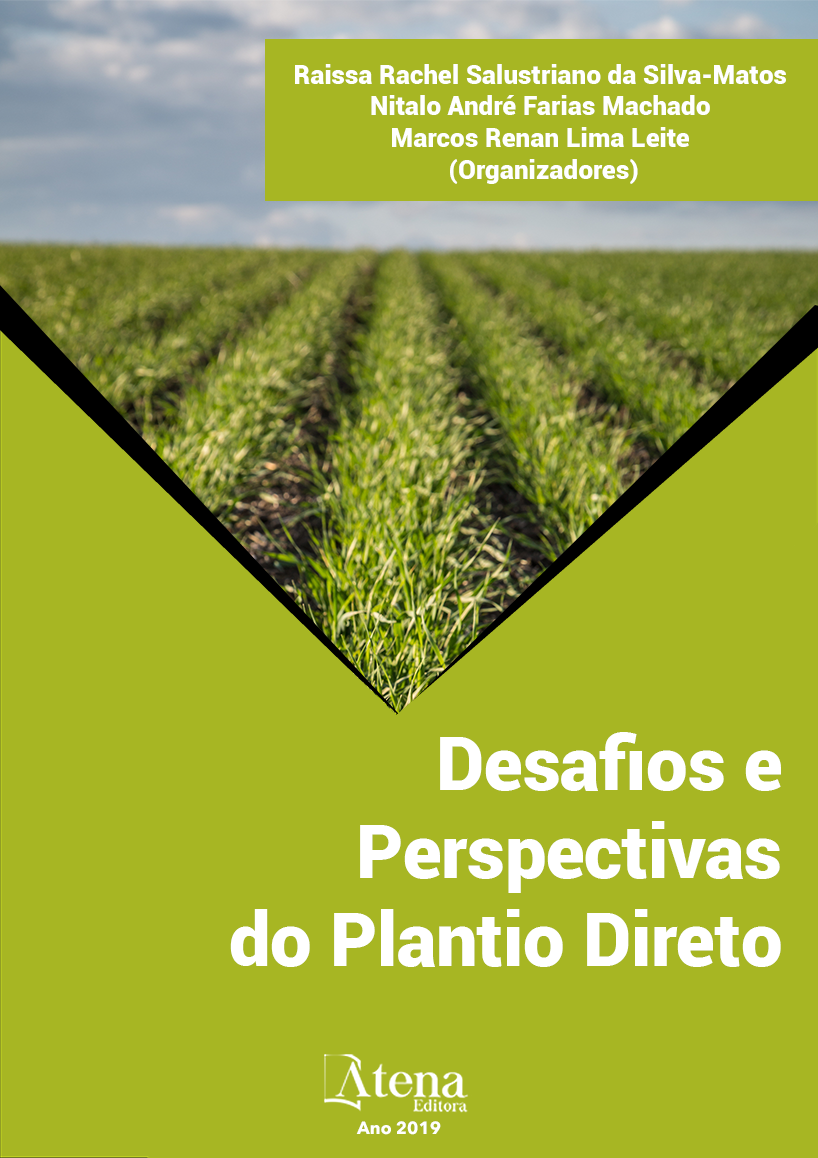
INTERCEPTAÇÃO DA RADIAÇÃO SOLAR E ÁREA FOLIAR DO MILHO INFLUENCIADA PELO ARRANJO ESPACIAL DE PLANTAS
O manejo para proporcionar um
adequado arranjo espacial de plantas na
cultura do milho visa aumentar a interceptação
da radiação solar, a produtividade do cereal, e
resultar em rentabilidade ao produtor. Assim,
com o estudo objetivou avaliar a influência
da redução do espaçamento entrelinhas e o
aumento de populações de plantas de milho
no índice de área foliar e na interceptação
da radiação fotossinteticamente ativa pela
cultura do milho no Cerrado. O experimento foi
desenvolvido nos anos agrícolas de 2011/12,
no município de Selvíria-MS, em LATOSSOLO
VERMELHO Distrófico típico argiloso. O
delineamento experimental utilizado foi em
blocos casualizados, em esquema fatorial 2
x 5, sendo espaçamentos entrelinhas (0,45
e 0,90 m) e populações de plantas (40.000;
55.000; 70.000; 85.000 e 100.000 plantas ha-
1). Foram avaliados e índice de área foliar
e a radiação fotossinteticamente ativa com
auxílio do aparelho ceptômetro linear modelo
AccuPAR LP-80 nos estádios V10, VT e R 1 de
desenvolvimento da cultura do milho. Ocorreu
aumento linear do índice de área foliar até o
pendoamento com o incremento na população
de plantas. A redução do espaçamento
entrelinhas de semeadura do milho de 0,90
m para 0,45 m resulta em maior índice de
área foliar até o pendoamento e aumento da
interceptação da radiação fotossinteticamente
ativa no início do ciclo da cultura.
INTERCEPTAÇÃO DA RADIAÇÃO SOLAR E ÁREA FOLIAR DO MILHO INFLUENCIADA PELO ARRANJO ESPACIAL DE PLANTAS
-
DOI: 10.22533/at.ed.2391917104
-
Palavras-chave: Espaçamento reduzido. Índice de área foliar. População de plantas. Radiação fotossinteticamente ativa. Zea mays L.
-
Keywords: Reduced spacing. Leaf area index. Photosynthetically active radiation. Plant population
-
Abstract:
The management to provide an
adequate spatial arrangement of plants in corn
crop aims to increase the interception of solar radiation, the productivity of the cereal,
and result in profitability to the producer.Thus, the objective of this study was to evaluate
the influence of reduction of spacing rows and the increase of corn plant populations
in the leaf area index and in the interception of photosynthetically active radiation by
the corn crop in the Cerrado.The experiment was developed during three agricultural
years, 2011/12, in the town of Selvíria, in the State of Mato Grosso do Sul, in typical
clayey Dystrophic Oxisol. The experimental design was a randomized block, in a 2 x
5 factorial scheme, between rows (0.45 and 0.90 m) and plant populations (40,000;
55,000; 70,000; 85,000 and 100,000 plants ha-1). Leaf area index and photosynthetically
active radiation were evaluated using the AccuPAR LP-80 linear ceptometer apparatus
at the V10, VT and R1 stages of corn crop development. There was a linear increase in
the leaf area index until the growth of the plant population. The reduction of the spacing
between rows of corn sowing from 0.90 m to 0.45 m results in a higher index of leaf
area to the laying and increased interception of photosynthetically active radiation at
the beginning of the crop cycle.
-
Número de páginas: 15
- Ricardo Antônio Ferreira Rodrigues
- Renato Jaqueto Goes
- Flávio Hiroshi Kaneko
- Orivaldo Arf
- ANDERSON TERUO TAKASU


